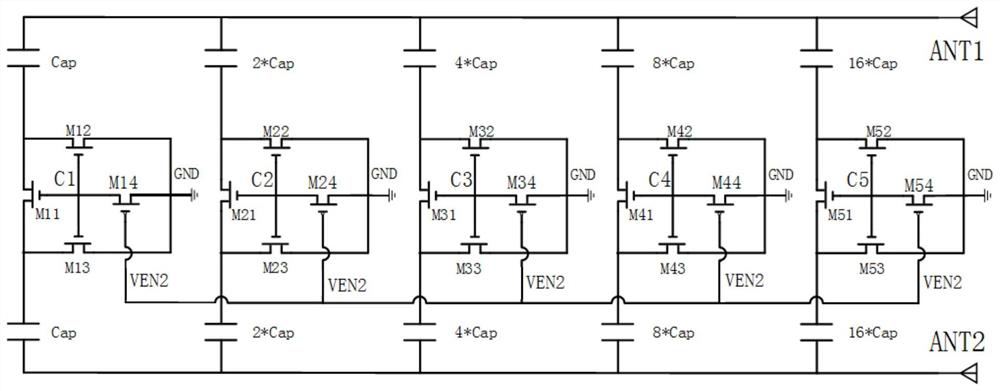Radio frequency passive tag capable of being activated and self-tuned for multiple times in real time and method
A passive tag and self-tuning technology, which is applied to record carriers used in machines, instruments, computer components, etc., can solve the problems of inability to achieve high-sensitivity and high-precision tuning of passive nodes, time-consuming and labor-intensive impedance matching, and poor precision of impedance adjustable Advanced problems, to achieve maximum power collection and energy utilization, improve stability and working distance, and facilitate the integration of chips
- Summary
- Abstract
- Description
- Claims
- Application Information
AI Technical Summary
Problems solved by technology
Method used
Image
Examples
Embodiment Construction
[0033] The principles and features of the present invention are described below in conjunction with the accompanying drawings, and the examples given are only used to explain the present invention, and are not intended to limit the scope of the present invention.
[0034] Such as figure 1 As shown, a radio frequency passive tag that can activate self-tuning multiple times in real time, including antenna, radio frequency front end, impedance adaptive adjustment module, analog front end, EEPROM, digital baseband, detection capacitor C11, switch K and switch W / L; The antenna is an antenna with a non-50 ohm impedance, and the antenna is cooperatively coupled with the radio frequency front end; the output port of the antenna is connected to the input end of the radio frequency front end, and the output port of the radio frequency front end is connected to the detection capacitor One end of C11 is connected, and the other end of the detection capacitor C11 is grounded; the common co...
PUM
 Login to View More
Login to View More Abstract
Description
Claims
Application Information
 Login to View More
Login to View More - R&D
- Intellectual Property
- Life Sciences
- Materials
- Tech Scout
- Unparalleled Data Quality
- Higher Quality Content
- 60% Fewer Hallucinations
Browse by: Latest US Patents, China's latest patents, Technical Efficacy Thesaurus, Application Domain, Technology Topic, Popular Technical Reports.
© 2025 PatSnap. All rights reserved.Legal|Privacy policy|Modern Slavery Act Transparency Statement|Sitemap|About US| Contact US: help@patsnap.com



